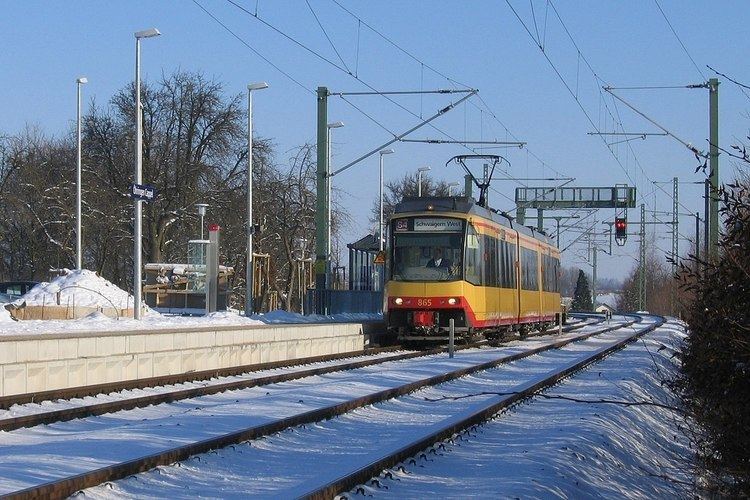 | ||
The Karlsruhe model is a tram-train system which consists tram/light rail trains and commuter/regional rail trains running on the same set of tracks, generally between or outside of urban areas. It was initially developed and implemented in the city of Karlsruhe, Germany by the local transit authority, Karlsruher Verkehrsverbund (KVV).
Contents
Overview
Commencing service in 1992, the system in Karlsruhe has provided a connection between the regular railway network and the city's local tram network. The whole system is now called the Karlsruhe Stadtbahn. Passengers may travel from distant towns such as Baden-Baden directly into the city centre of Karlsruhe, bridging the inconvenient distance between the main station and the city centre. For most trips, the number of train transfers has been reduced significantly.
This model has led to the creation of similar tram-train systems in other locations.
Other examples
A similar model has been connecting the city of Vienna with the Baden suburb since 1886 as Lokalbahn Wien-Baden. Other systems that have implemented the Karlsruhe model include:
Train-trams
Zwickau, Germany has reversed the Karlsruhe model by extending Lightweight RegioSprinter diesel trains from the main-line railway onto the street tramway as TrainTrams.
